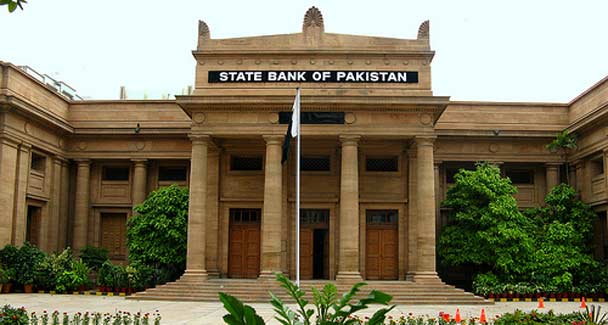As the State Bank of Pakistan (SBP) is all set to announce its monetary policy for the months of November and December tomorrow (Friday), almost all major investment banks and analysts have predicted that the policy rate will remain unchanged, at 13.25pc.
All, except one: BMA Capital.
The investment bank has instead predicted a new policy rate at 12.75pc, a reduction of 50 basis points.
This makes the investment bank an outlier among its peers, which have all predicted an otherwise unchanged rate.
Speaking to Profit, Saad Hashmi, the Executive Director of research and business development at BMA Capital, said there are three main reasons for BMA Capital’s unusual stance.
“First, since the last policy review, secondary market yields have come down. In effect, the fixed income market is expecting inflation to come down. Secondly, inflation in Pakistan will come down in 2020. This has also been indicated by recent statements by the SBP governor.
“Thirdly, I would say the central bank’s monetary policy is forward-looking. [They] are looking at the prices in the coming 12 months and not what happened in the previous few months.”
This stance has been echoed in BMA Capital’s research reports to clients. In its weekly (November 11-15) review for clients, BMA Capital stated, “Most investors will keep an eye on the upcoming Monetary Policy Statement (MPS) as Pakistan’s economy is presently in a position to afford a cut in interest rates; we believe our view of a 50bps reduction in MPS, in line with the government’s stance of promoting growth in Pakistan’s economy. Moreover, the drowning of the political noise will further keep investors’ interest upbeat.”
In a separate report on Pakistan’s banking sector, analyst Syed Masroor Hussain Zaidi wrote, “We are of the view that interest rate has now peaked and is heading towards a cut. This scenario will require banks to calibrate themselves as per the upcoming interest rate regime.”
BMA’s prediction of a lower policy rate is because of its positive take on the Pakistani economy.
The same report goes on to say, “Improving macroeconomic indicators along with the stabilisation of taxation and accountability drive are likely to ease off stress for businesses. We believe that economic recovery has already started.”
However, many remain more cautious than BMA Capital and believe that the SBP will keep the policy rate unchanged until more significant positive economic indicators appear, such as a more concrete fall in inflation, or a rise in the forex reserves.
Hashmi said this might be because others are looking more at the ‘short-run’. “The inflation number for October 2019 recently came out, and it was higher than expected. So maybe that’s why people are concerned. But inflation is a volatile number, and one should look at the average inflation rate.”
Earlier on Monday, SBP Governor Reza Baqir, in his address at the Karachi Chamber of Commerce and Industry, had claimed that the country’s economy was improving.
“Rest assured, we are moving gradually. We will cut down interest rate when inflation drops,” he said. “Economic situation of the country is improving and some segments are showing double-digit growth in terms of quantity.”
The SBP last changed the policy rate on July 16, to 13.25pc, a rise of 100 basis points. At the time, it cited increased potential inflation, owing to a rise in utility costs.
The SBP kept the policy rate unchanged in its review on September 16, saying that the inflation outcomes were largely in line with expectations.
At the start of the year 2019, the policy rate was 10pc. Subsequent policy reviews – in January, March, May and July – increased the policy rate by a total of 325 basis points.




